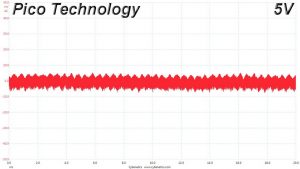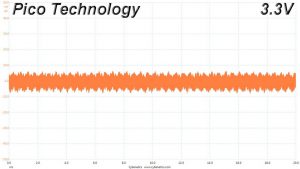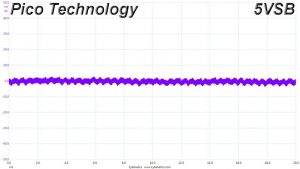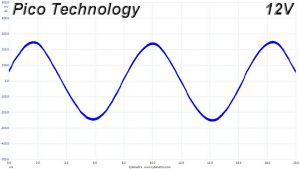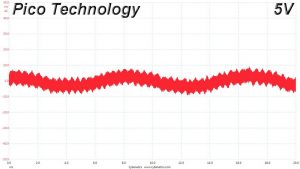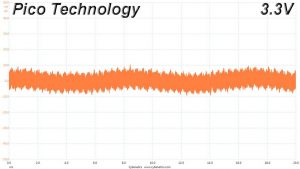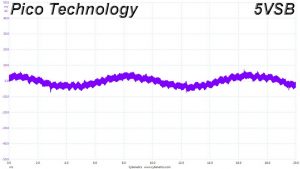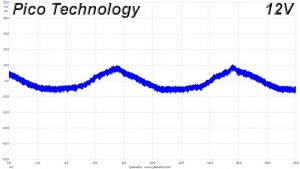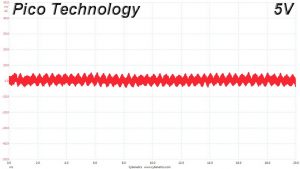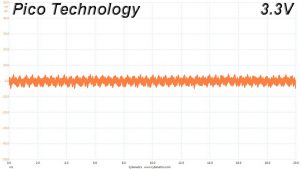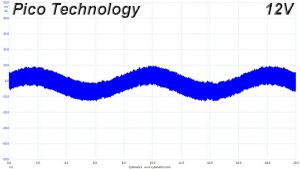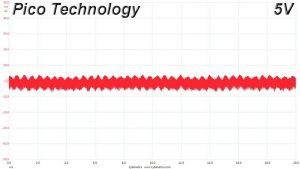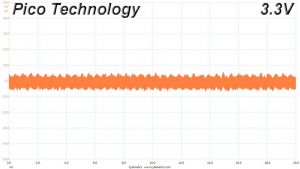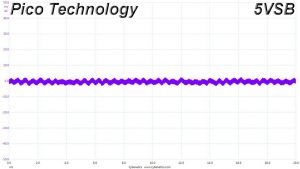To learn how we measure ripple, please click here.
The following table includes the ripple levels we measured on the ST1100-TI’s rails. The limits, according to the ATX specification, are 120mV (+12V) and 50mV (5V, 3.3V, and 5VSB).
| Test | 12V | 5V | 3.3V | 5VSB | Pass/Fail |
| 10% Load | 17.3 mV | 7.1 mV | 6.7 mV | 4.2 mV | Pass |
| 20% Load | 17.5 mV | 10.0 mV | 7.8 mV | 6.0 mV | Pass |
| 30% Load | 19.9 mV | 10.5 mV | 8.7 mV | 5.9 mV | Pass |
| 40% Load | 21.3 mV | 10.9 mV | 9.9 mV | 6.3 mV | Pass |
| 50% Load | 23.5 mV | 11.0 mV | 10.9 mV | 6.1 mV | Pass |
| 60% Load | 21.8 mV | 10.6 mV | 11.2 mV | 5.9 mV | Pass |
| 70% Load | 23.9 mV | 11.2 mV | 12.1 mV | 5.9 mV | Pass |
| 80% Load | 25.0 mV | 12.1 mV | 15.7 mV | 6.2 mV | Pass |
| 90% Load | 25.6 mV | 12.7 mV | 17.7 mV | 6.6 mV | Pass |
| 100% Load | 25.4 mV | 13.6 mV | 15.9 mV | 7.1 mV | Pass |
| 110% Load | 548.8 mV | 20.1 mV | 21.6 mV | 16.8 mV | Fail |
| Crossload 1 | 20.6 mV | 11.2 mV | 10.3 mV | 4.9 mV | Pass |
| Crossload 2 | 24.1 mV | 11.9 mV | 13.3 mV | 6.4 mV | Pass |
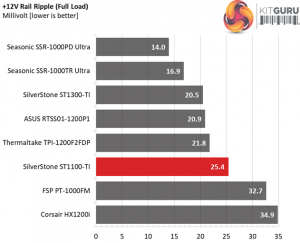
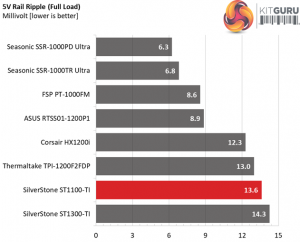
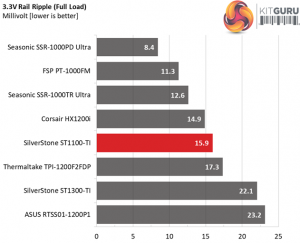
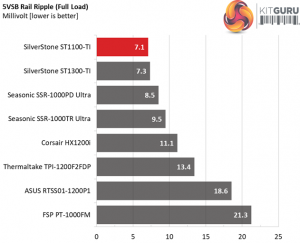
The ripple suppression is very good. Only when we pushed the PSU beyond its limits did we see the +12V rail go south, and besides a huge voltage drop, it also failed to keep ripple in control.
Ripple Oscilloscope Screenshots
The following oscilloscope screenshots illustrate the AC ripple and noise registered on the main rails (+12V, 5V, 3.3V and 5VSB). The bigger the fluctuations on the screen, the bigger the ripple/noise. We set 0.01 V/Div (each vertical division/box equals 0.01V) as the standard for all measurements.
 KitGuru KitGuru.net – Tech News | Hardware News | Hardware Reviews | IOS | Mobile | Gaming | Graphics Cards
KitGuru KitGuru.net – Tech News | Hardware News | Hardware Reviews | IOS | Mobile | Gaming | Graphics Cards



